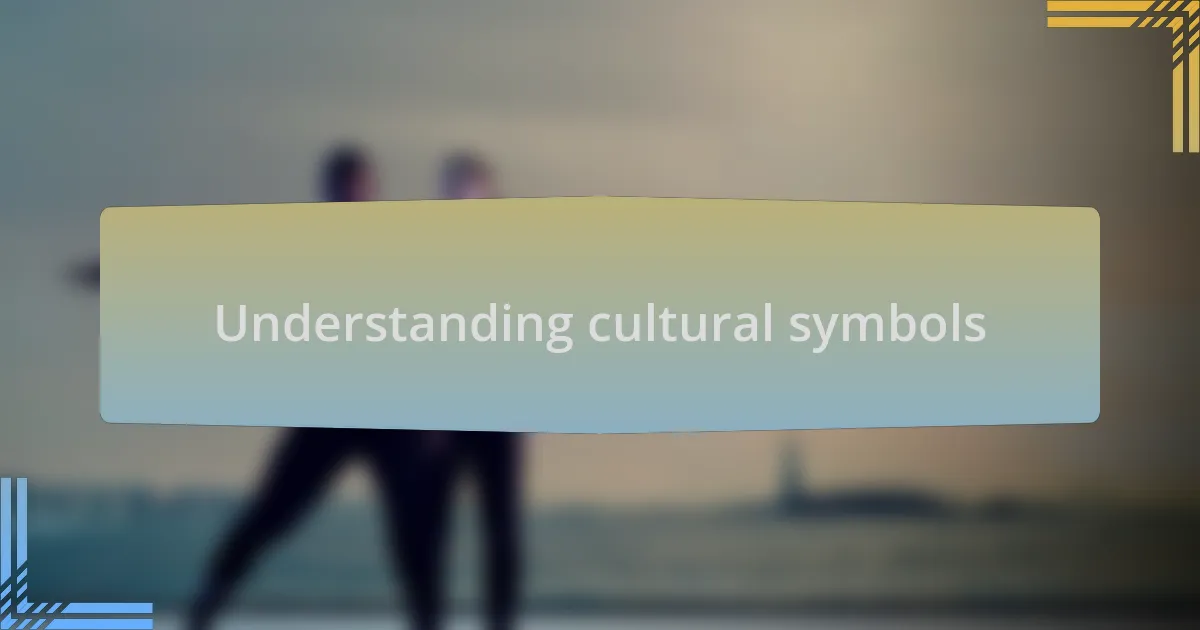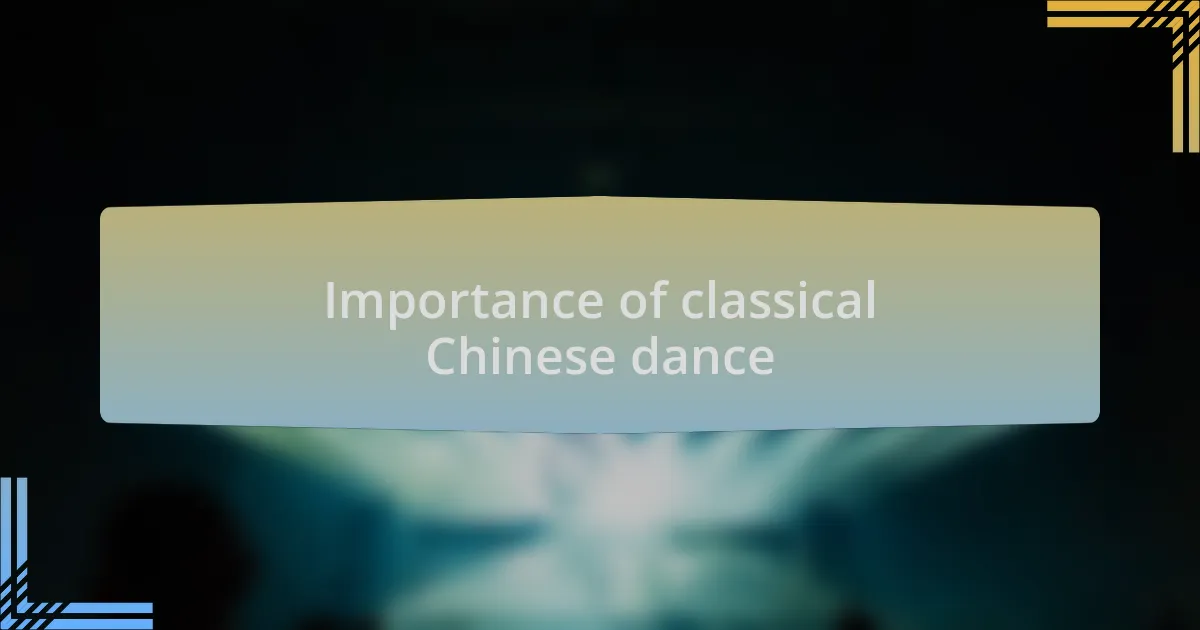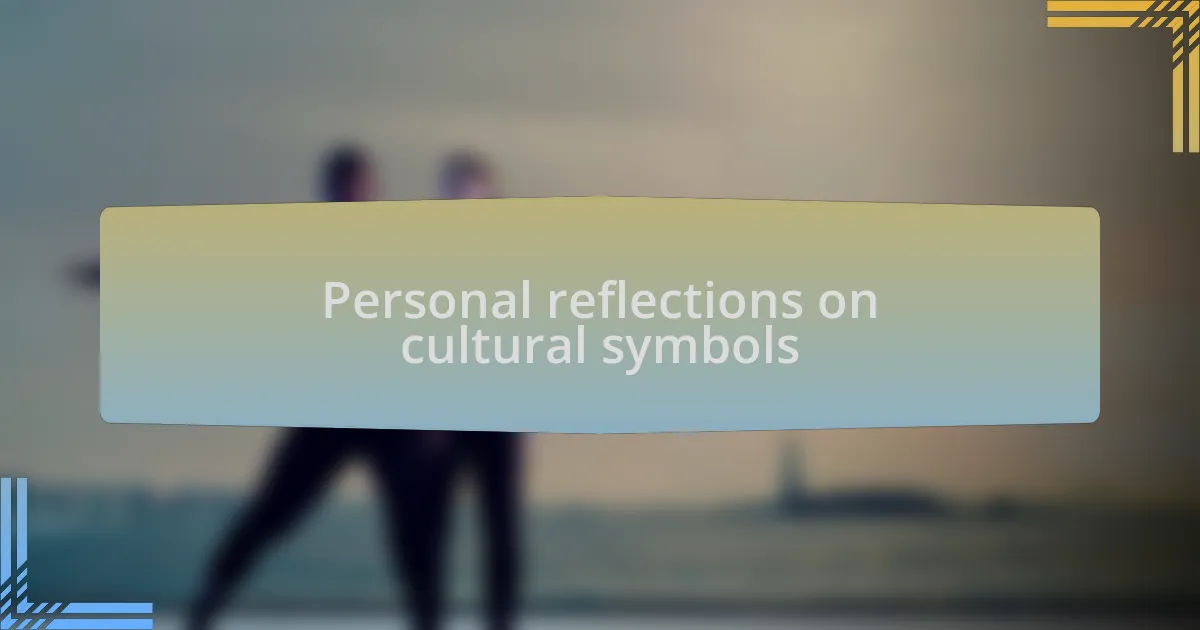Key takeaways:
- Cultural symbols like dragons and phoenixes embody the values and spirit of a civilization, connecting individuals to their histories and emotions.
- Incorporating cultural symbols in dance enriches performances and fosters a deeper connection to personal and communal narratives.

Understanding cultural symbols
Cultural symbols are the threads that weave together the tapestry of a society’s identity. For instance, when I first encountered the symbol of the dragon in Chinese culture, it stirred something deep within me. It was more than just a mythical creature; it represented power, strength, and good fortune, making me reflect on how symbols can embody the spirit of an entire civilization.
I recall my experience visiting a local dance performance where intricate costumes showcased phoenix motifs—symbols of rebirth and resilience. Seeing these symbols in motion not only captivated my attention but also prompted me to consider how cultural symbols influence emotions and beliefs. Have you ever seen a symbol that resonated so deeply with you that it sparked an emotional response? It’s fascinating how these representations can connect us to our histories and aspirations.
As I delved deeper into the meaning behind symbols, I realized that they often tell stories of struggle, triumph, and hope within a given culture. Each intricate detail can convey a message far beyond its surface. For example, colors and patterns in Chinese attire can signify various cultural nuances. Understanding these symbols enriches not just our appreciation of art but also our insights into the cultural narratives they encapsulate.

Importance of classical Chinese dance
Classical Chinese dance is a vital expression of cultural heritage, encapsulating centuries of history and tradition. I remember the first time I watched a performance that showcased the fluid movements inspired by nature—each gesture felt like a poetic tribute to the world around us. It reminded me that dance is not just an art form; it’s a powerful vehicle for storytelling, reflecting the values and spirit of Chinese culture.
The importance of classical Chinese dance goes beyond aesthetics; it serves as a means of preserving and transmitting cultural identity. When I participated in a workshop that explored traditional dance forms, I felt connected to a lineage of artists who danced out their beliefs and experiences. How can we truly appreciate the depth of a culture without understanding the graceful narratives expressed through its dance?
Moreover, the intricate choreography often conveys philosophical concepts central to Chinese thought, such as balance and harmony. I often find myself thinking about how each movement mirrors the ideals of yin and yang. It’s fascinating to realize that learning these dances is learning life lessons too—if we pay close attention, they can teach us more about ourselves and our place in the world.

Personal reflections on cultural symbols
Cultural symbols have always captivated me, especially in the context of classical Chinese dance. I recall a moment during a performance when the fluttering of silk sleeves resembled a bird taking flight – it was as if I could feel the spirit of liberation in those movements. Isn’t it remarkable how a single gesture can evoke such profound emotions and convey layers of meaning about freedom and beauty?
Through my journey of understanding these symbols, I’ve discovered that they often encapsulate complex ideas that are deeply woven into the fabric of Chinese history. While attending a cultural festival, I was struck by how a simple choreography could represent not just individual stories, but the collective memory of a community. It makes me wonder: how many untold stories are dancing just beneath the surface of these gestures?
As I reflect on the symbols within classical Chinese dance, I often find connections to my own experiences and values. For instance, the concept of seasons changing, expressed through graceful transitions, resonates with my life journey of transformation. Isn’t it intriguing how art can create bridges between the past and our individual narratives, inviting us to explore our identities through the rhythm and beauty of dance?

Embracing cultural symbolism in practice
In my practice of classical Chinese dance, I’ve found that incorporating cultural symbols brings an enriching depth to each performance. Recently, while rehearsing a piece inspired by traditional tales, I was struck by the way my movements mirrored the symbolism of the phoenix rising anew. This experience opened my eyes to the nuances of storytelling inherent in dance, prompting me to ask: how can we express our personal narratives through the lens of these ancient symbols?
Embracing cultural symbolism in my practice also means being mindful of their origins and implications. During a workshop, I had the opportunity to learn about the significance of colors in dance costumes, with red symbolizing good fortune and joy. As I donned a vibrant red sash, I felt a surge of energy that connected me to generations past—imagine how each performance can serve as a celebration of heritage and shared aspirations.
Moreover, I’ve realized that understanding these symbols is not merely an academic pursuit; it’s about cultivating a genuine connection to the movements themselves. For instance, when I dance to symbolize the tranquility of a bamboo forest, I not only embody that calmness, but I also reflect on my personal experiences of finding solace in nature. How often do we overlook the profound influence of such symbols in our lives, waiting for the art to tease them out and bring them to light?